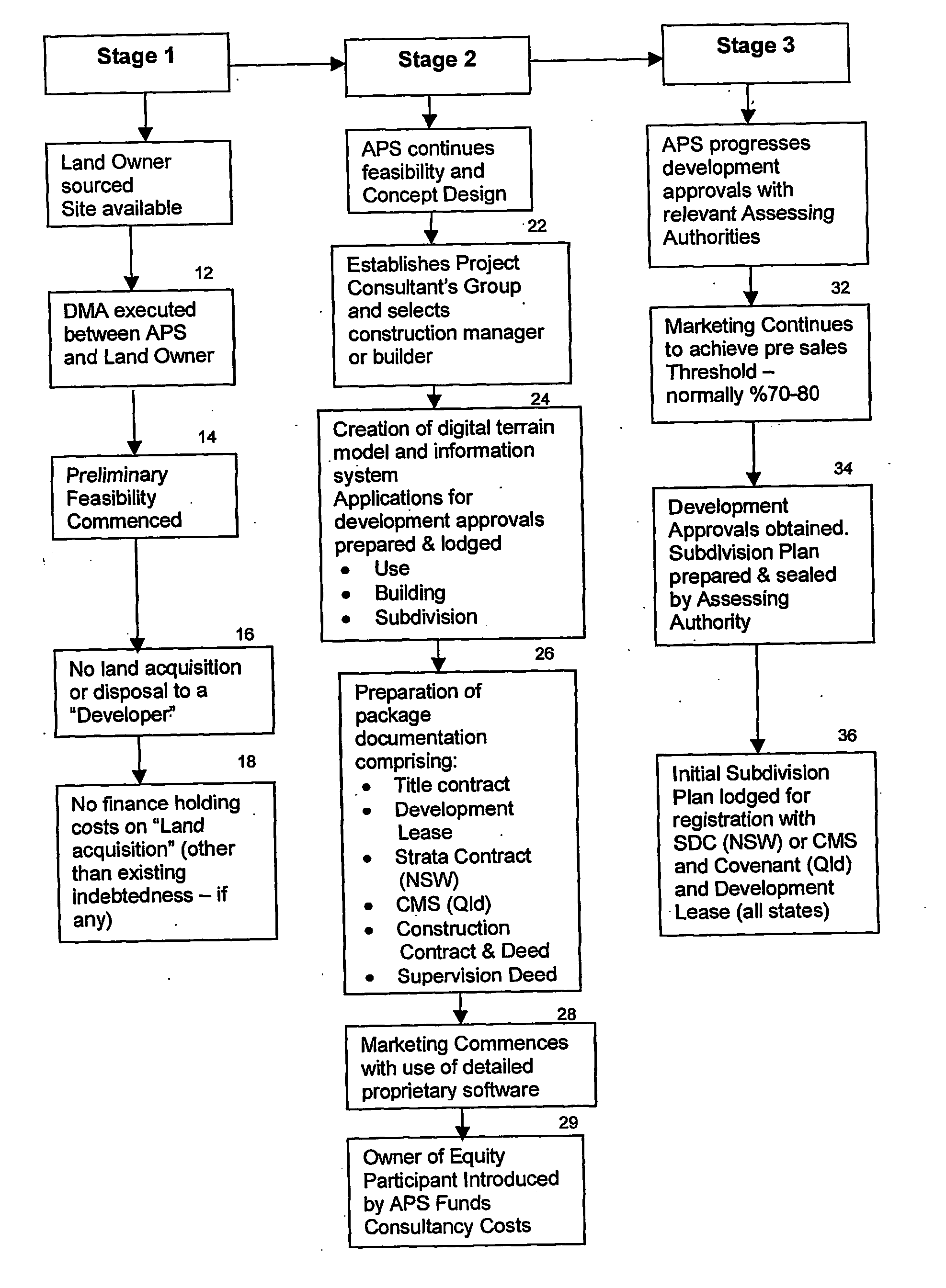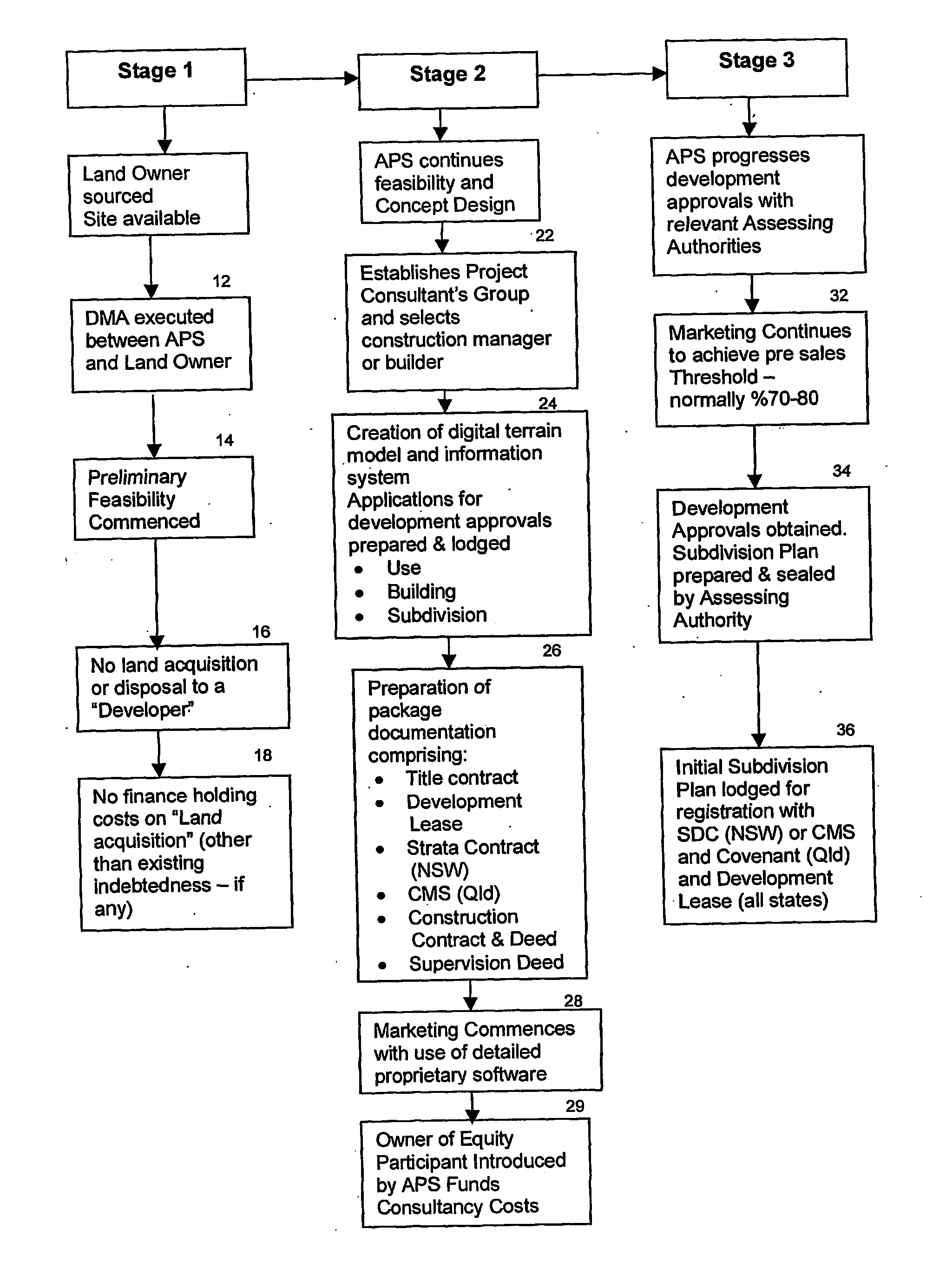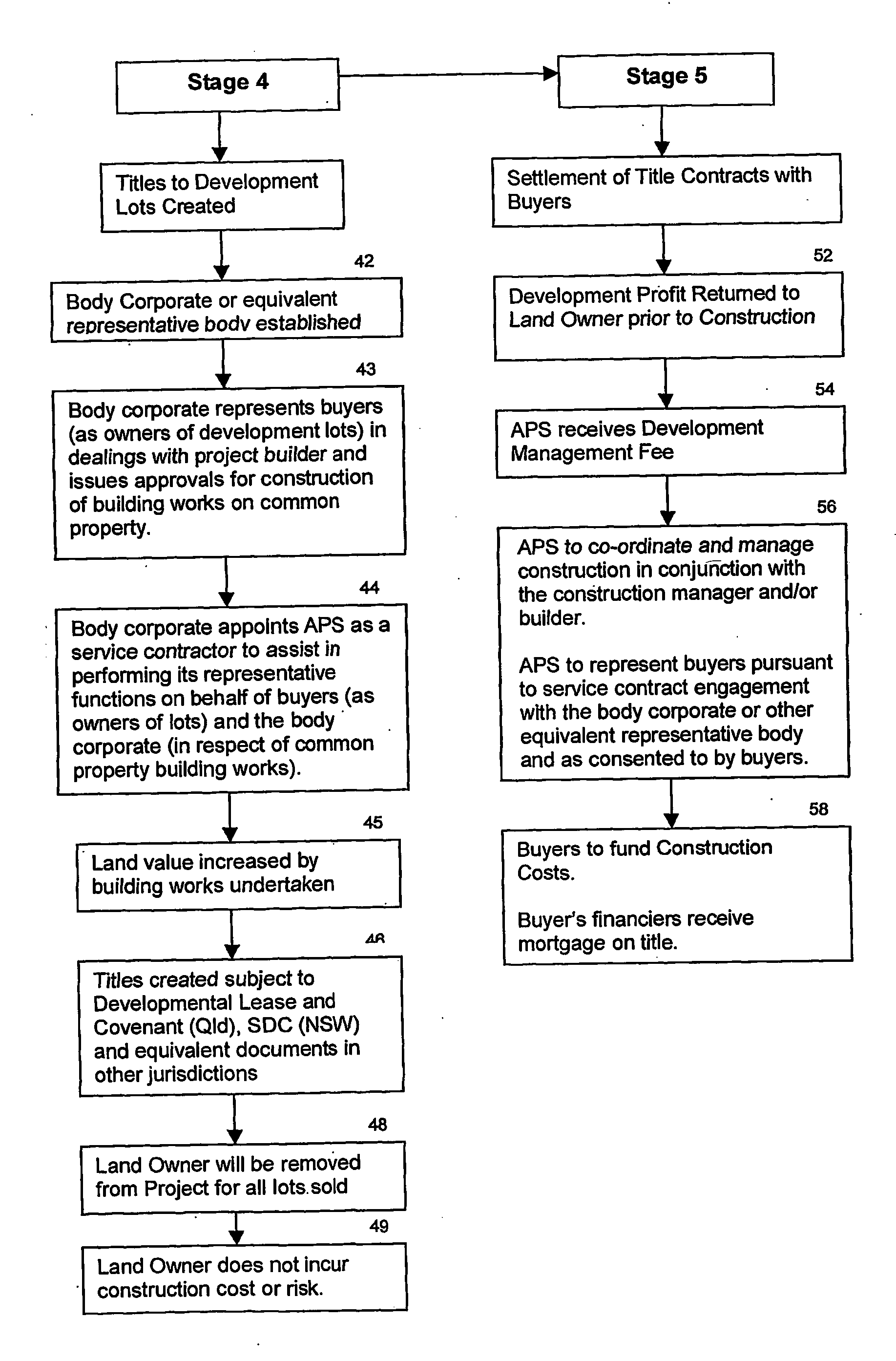There is limited
accessibility for land owners to the development process and no
direct participation in development profit generated from the use of the land for development.
In the traditional development mechanism, the developer carries the financial risk associated with meeting costs of development from site acquisition to disposal of product.
This commitment can, of itself,
restrict the scope or quality of a development proposal by limiting the available financial resources of the developer.
In large scale single or mixed use developments that may take anywhere between 1 to 3 years (or longer) to complete, there are significant financing costs to be factored into any project feasibility and these costs reduce net profit in the hands of the developer as they are met or repaid from the proceeds of sale of development product and must be absorbed or carried until then.
A development concept may be confined by feasibility studies based on the financial risk and project costs inherent in the traditional development mechanism.
That is, there is less ability for the developer to provide market incentives for buyers to purchase as there is little project profit to "share" with end buyers.
However, ultimately, the land or other assets of the developer are still at risk.
Accordingly, the existence of the builder and any matters affecting construction timing have a direct
impact on the development and may have an adverse affect on net return to the developer.
Non-compliance with development approvals for construction adversely affects the ability of the developer to comply with approvals obtained for
subdivision of the development site.
In turn, this will
delay creation of titles and return of profit through the settlement of sales to end buyers.
It also increases
exposure to impacts from other project risk factors.
Buyers of completed development product under the traditional development method do not share in project profit (other than to a very limited extent where discounts against
list prices reduce ultimate profit in the hands of the developer).
The risk of buyer default due to a change in the buyer's personal or financial circumstances or a change in
market conditions is carried by the developer from the commencement of the project and signing of buyers under pre-sales contracts through to completion of construction works, the provision of titles and rights to occupancy of completed development product.
The traditional development mechanism does not provide for significant buyer involvement in the feasibility and
design process.
Because developers work within comparatively narrow profit margins, there is a limit to the degree of variation or input that end buyers of product can be allowed to have at commencement of the
design stage.
This is also reflected in the limited incentives offered to end buyers in the marketing of development product and the retention of profit realised on the sale of development product, including management rights for development product.
There is limited
accessibility to the benefits of development for land owners without development expertise or the ability to participate in development of their land--the "development opportunity" is seldom realised by the land owners.
In a traditional development method, the lack of participation in the development process and realised development profit means that balance sheet enhancement for corporate land owners is limited to the price achievable on disposal of the land to a development entity or, in some cases, returns from joint venture or similar arrangements using a traditional development method.
One development entity carries all project risk from site acquisition to realisation of development product.
This is reflected in the cost of provision of financing facilities to the developer and in turn that cost is included in development costs, reducing potential returns.
Cost pressures impose pressure on developers at the expense of product quality or diversity.
As noted, end buyers do not share in the development return other than to a very limited extent if discounts or incentives are offered by the developer and these are, in general, limited by the narrower returns and greater cost pressures inherent in the traditional development method.
(a) delays to construction;
(b) default on the part of the project builder or corporate / entity risk (i.e. builder insolvency);
(c) costs of project funding from site acquisition to completion of construction and sale of end product and increases in the developer's cost base caused by the other factors listed here;
(d)
delay in obtaining regulatory approvals required for a project which will
push out the point of return of development profit by delaying commencement of construction and ultimately creation of titles on which contracts can be settled;
(e) changes in market demands; and
(f) a limited ability to accommodate market demands in early design and conceptual work.
 Login to View More
Login to View More  Login to View More
Login to View More 


